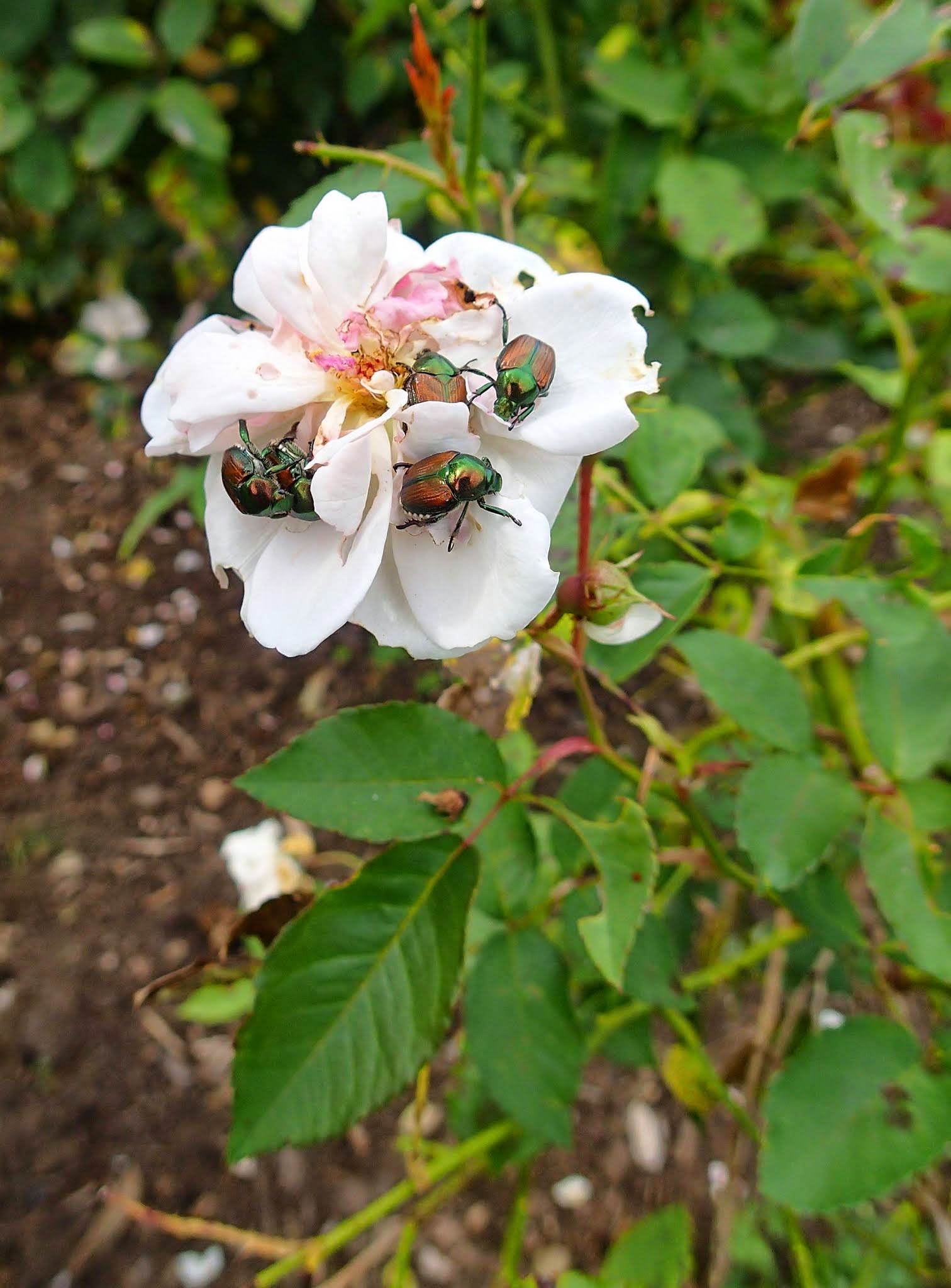Japanese Beetles: Facing the Onslaught
go.ncsu.edu/readext?945574
en Español / em Português
El inglés es el idioma de control de esta página. En la medida en que haya algún conflicto entre la traducción al inglés y la traducción, el inglés prevalece.
Al hacer clic en el enlace de traducción se activa un servicio de traducción gratuito para convertir la página al español. Al igual que con cualquier traducción por Internet, la conversión no es sensible al contexto y puede que no traduzca el texto en su significado original. NC State Extension no garantiza la exactitud del texto traducido. Por favor, tenga en cuenta que algunas aplicaciones y/o servicios pueden no funcionar como se espera cuando se traducen.
Português
Inglês é o idioma de controle desta página. Na medida que haja algum conflito entre o texto original em Inglês e a tradução, o Inglês prevalece.
Ao clicar no link de tradução, um serviço gratuito de tradução será ativado para converter a página para o Português. Como em qualquer tradução pela internet, a conversão não é sensivel ao contexto e pode não ocorrer a tradução para o significado orginal. O serviço de Extensão da Carolina do Norte (NC State Extension) não garante a exatidão do texto traduzido. Por favor, observe que algumas funções ou serviços podem não funcionar como esperado após a tradução.
English
English is the controlling language of this page. To the extent there is any conflict between the English text and the translation, English controls.
Clicking on the translation link activates a free translation service to convert the page to Spanish. As with any Internet translation, the conversion is not context-sensitive and may not translate the text to its original meaning. NC State Extension does not guarantee the accuracy of the translated text. Please note that some applications and/or services may not function as expected when translated.
Collapse ▲Summertime in North Carolina is an incredible time because we have so much plant and animal diversity in our climate. But we also can have the most disappointments. Japanese beetles emerge starting in May and June (more June this year possibly because of the weather), and they seemingly make a “beetle line” right to your most prized plants. Some plants are more susceptible than others, but it always seems to be the most beautiful they will be attracted to. Online NC Gardening Groups have been grumbling about them for months now. Let’s take a closer look.
The Invasion
The Japanese Beetle, Popillia japonica, is native to the islands of Japan, and came to North America most likely on the roots of nursery plants from Japan. Think plants covered in soil where it is easy for grubs to hide! Two inspectors with the New Jersey Department of Agriculture were surveying insect damage at Henry A. Dreer Nursery near Riverton, NJ, in 1916, when they noticed a beetle they didn’t recognize, and observed its vigorous and indiscriminate eating habits. They thought the beetles were from the South, having been blown up in a storm. But, as they brought their sample to entomologists throughout the region and at the USDA, they found that the beetle was like nothing observed before. It was a USDA beetle specialist who recognized the Japanese beetle in an insect book translated from Japanese.
The US Government passed the Plant Quarantine Act in 1912 and amended it in 1917. The amount of funding and manpower were underwhelming though, and many men resigned after being tasked with eradicating the beetle. Nurserymen in the Eastern US fought the Federal Horticultural Board, which was tasked with the eradication efforts, because the final determination was to destroy the nursery stock. In the end, the high value of the nursery plants made the financial cost too high.
Unfortunately, we know the eradication efforts were inadequate because the beetle is found from coast to coast in the US today (though mainly in the east) and it is thriving. The whole story is quite the drama and a lesson in how important quarantine protocols are (see Kenneth Frank’s epic report below). It might have been worth the short-term loss of $300,000-$400,000 for the long-term benefits of not having to spend billions of dollars to protect agricultural and horticultural crops since the beetle’s introduction.
The Damage
Japanese beetles at every stage of their complete metamorphosis are voracious eaters in North America. The larvae are common lawn pests, and are known to feed on roots of many other plants, as well. The adult beetles feed on more than 350 different species of plants, but are especially fond of roses, grapes, soybeans, corn silks, flowers of all kinds, and overripe fruit.

Japanese Beetles (Popillia japonica). Jerks.
The tell-tale skeletonization of leaves and brow-beaten appearance of otherwise healthy flowers are evidence of overfeeding from adult Japanese Beetles. They congregate on desirable plants, and eat and mate in a matter of days and weeks. The larvae eat roots and underground shoots of plants, and can make an otherwise healthy plant look wilted or turn brown. This is especially obvious in lawns with a heavy infestation.
The Control
Everyone seems to have their own ideas when it comes to control. Gardeners, new and wise, still shake their heads in defeat some years when the infestation is especially bad, though. The beetles overwinter as larvae and pupate in [May and] June, depending on weather conditions. Then the beetle adults seemingly appear from nowhere and mob our plants. Here are some top tips to deal with Japanese beetles if/when they appear.
– Picking them off by hand into a bucket of soapy water– You can go old-school and get a bucket of water, dribble some dish soap in it and mix it lightly. Walk around infested plants and knock the beetles directly into the bucket. The soapy water acts as a trap so you can let the beetles drown and not have them flying around and laying eggs near your garden.
– Shaking plants every morning– Beetles will congregate with other beetles, so if you leave them alone they will continue to gather. Going to that plant that they keep gathering on a shaking it will knock the beetles off and make it less likely they will congregate (see soap bucket method above). This takes effort though!
– Use traps– Traps are by no means THE answer. They are a tool in the tool box. If you choose to use traps, use them FAR away from prized plants and in a couple areas. Make sure to empty the traps every one to two days, as the rotting beetle smell will deter more beetles from coming to the traps.
– Chemical control– There are lots of insecticides on the market that are effective against Japanese beetles. It is important to keep in mind that some of these chemicals will also kill or weaken your favorite pollinators, as well. That is why it is important to read pesticide labels before application. NC State TurfFiles has a great list of chemical options on their Japanese Beetle page.
Japanese beetles are an invasive species that is part of our horticultural and agricultural landscape in modern times. Diligence and maintenance can keep their hungry appetites from decimating your prized plants!
References
Gail Griffin’s 2021 Article about Japanese Beetles
USDA APHIS Profile about Japanese Beetles
NC State Guide to Japanese Beetles
TurfFiles Information about Japanese Beetle
Bug Guide Profile for Japanese Beetle
iNaturalist Page for Japanese Beetle Distribution
Amanda Wilkins is the Horticulture Agent for North Carolina Cooperative Extension in Lee County.




